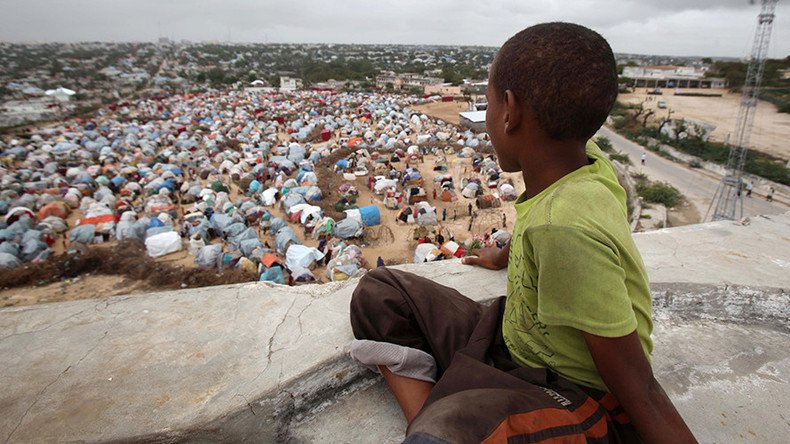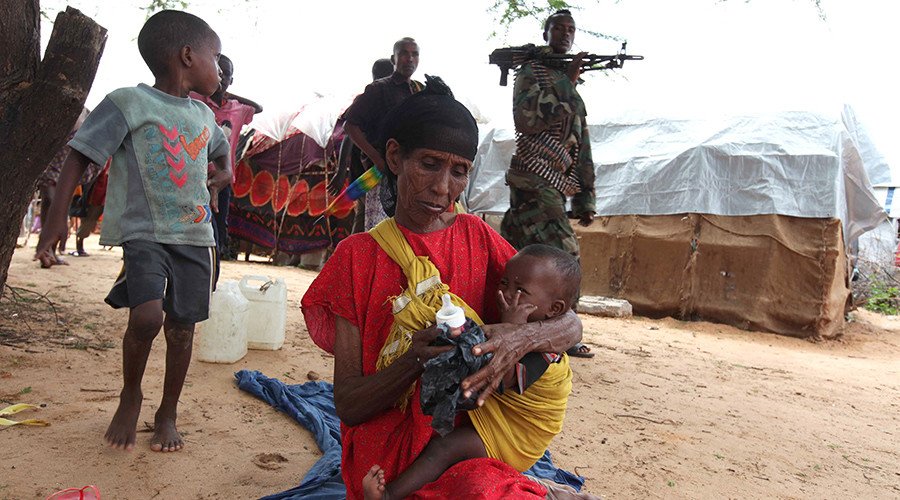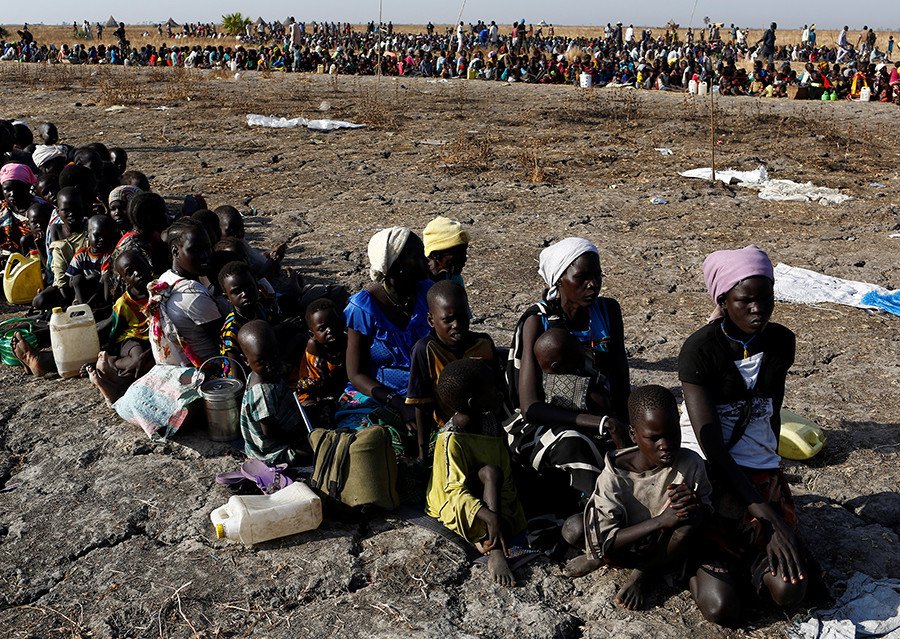Conflict pushes 20mn to brink of starvation: RT primer on global famine, interview with WFP (VIDEO)

The world faces the worst humanitarian crisis since World War II. Four countries across Africa and the Middle East are on the brink of disaster.
Roughly 20 million people in those areas could starve to death before 2018.
The United Nations is desperately seeking funding to cope with the biggest catastrophe since the organization’s inception in 1945.
As part of a series exploring the causes of global famine, RT puts the spotlight on the countries in the midst of peril; Yemen, South Sudan, Somalia, and Nigeria.
Over the coming weeks, RT will explore each of the four main crisis zones in depth, conducting interviews with the NGOs and private organizations at the forefront of tackling potentially one of humanity’s greatest ever challenges.
UN Secretary-General Antonio Guterres declared in March that $4.4 billion in emergency funds were required to overcome the almost insurmountable task of feeding roughly 20 million people across the four different conflict zones.
Now, in August, despite the United States alone pledging $1.4 billion in aid, the total amount of funding stands at a little over one-third of the required amount.

Arif Husain, chief economist at the World Food Programme (WFP), spoke to RT about the extent of the crisis and the problems plaguing the international aid community.
RT: What is the total estimated monetary cost to feed the roughly 20 million people at risk of starvation?
Arif Husain:“WFP needs close to $1 billion for its operations to prevent famine in the four countries for the next six months alone – so far we have received less than half of what we need to do our job.
“Today 10 out of the 13 largest hunger crises around the world are driven by conflicts. It is extremely important to recognize that funding needs will continue to rise unless we find peace and put an end to such conflicts that are the main cause of hunger and widespread displacement.”

RT: The US recently pledged almost $1 billion in famine relief for 2017 – what does this represent in terms of the WFP’s overall needs this year? How does it rank when compared with other nations or the EU pledge to combating famine worldwide?
Husain:“WFP needs $9.6 billion to meet global food assistance needs for 2017. The US is traditionally the largest individual donor to WFP, providing on average around 30 percent of the annual funding.”
“The reality is that donors have been increasingly generous but, despite that, funding has not kept pace with the growth in severe hunger crises in recent years.
“Today about 108 million people are experiencing severe hunger compared to around 80 million the previous year – a 35 percent increase in a single year according to the Global Report on Food Crises 2017.”
“This dramatic increase reflects the trouble people have in producing and accessing food due to conflict and extreme weather conditions such as drought and poor rainfall caused by El Niño in 2016.”
“WFP has seen its own costs spike by more than 140 percent over a seven-year period, from $2.2 billion in 2009 to $5.3 billion in 2015, according to a new WFP report released this month.”
‘Humanity can’t continue to lose out to politics’ – UN relief chief makes plea to save Yemen https://t.co/kCMZHtxF2I
— RT (@RT_com) July 13, 2017
RT: Does the WFP require peacekeepers to effectively feed those most at risk and, if so, has this been discussed in the UN?
Husain:“Lack of security is one of the main obstacles for WFP in reaching desperate and hungry people with life-saving food and non-food supplies.”
“We continue to call on all parties to conflict in Nigeria, Somalia, South Sudan, and Yemen to abide by international humanitarian law and allow humanitarian workers to reach people in urgent need.”
“In South Sudan and Nigeria we lead rapid response teams involving UN agencies and NGOs – who can respond swiftly, often travelling by air to areas that are remote or hard to access.”
“But to beat back a catastrophe what is needed is a steady flow of humanitarian assistance over time, not intermittent or one-off provisions.”
Made in the West: New era of global famine thanks to war and chaos (Op-Edge by Dan Glazebrook) https://t.co/8Yq0pjdOTq
— RT (@RT_com) July 17, 2017
RT: Where do you feel resources would best be allocated to alleviate the most suffering for the most people?
Husain:“In these four countries WFP had to quickly scale-up its operations. In June we assisted more than 11 million vulnerable children, women and men who are experiencing extreme hunger and malnutrition.
“We must continue to do more as Nigeria and South Sudan are in the midst of the ‘hunger seasons’ which is traditionally the toughest time as harvest from the previous year runs out and even those lucky enough to still farm must wait for the new harvest.”
“Furthermore, rains during this time make many places difficult or impossible to reach by road. Using planes to deliver food costs on average up to 10 times more than getting it there by road.”
“In Yemen, the needs are vast – WFP is providing food assistance for those most urgently in need of support, seeking to reach 6.8 million people suffering from severe hunger. An unprecedented cholera outbreak is unfolding on top of the food crisis.”
‘Entirely preventable’: Aid agencies blame #Yemen blockade, economic collapse for #choleraoutbreakhttps://t.co/Ri4ea0wWtG
— RT (@RT_com) May 16, 2017












